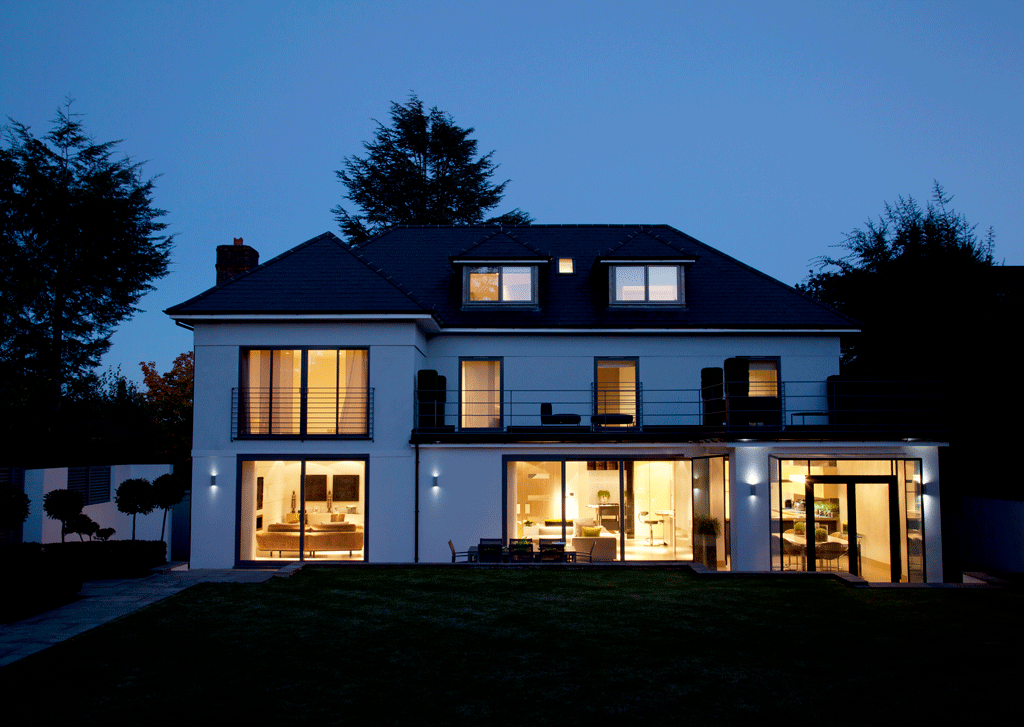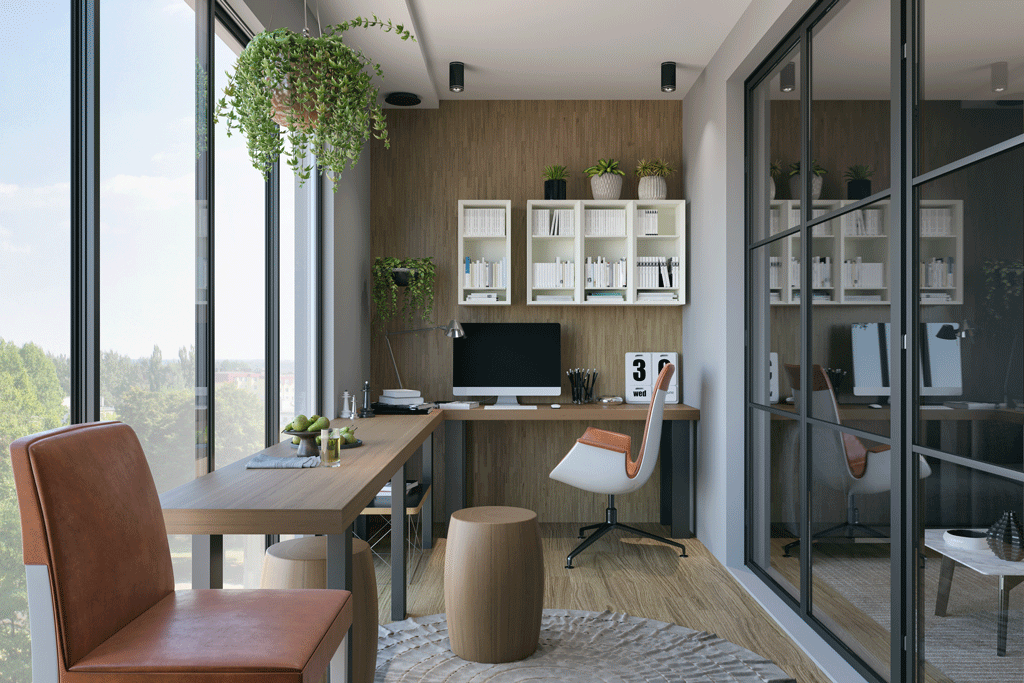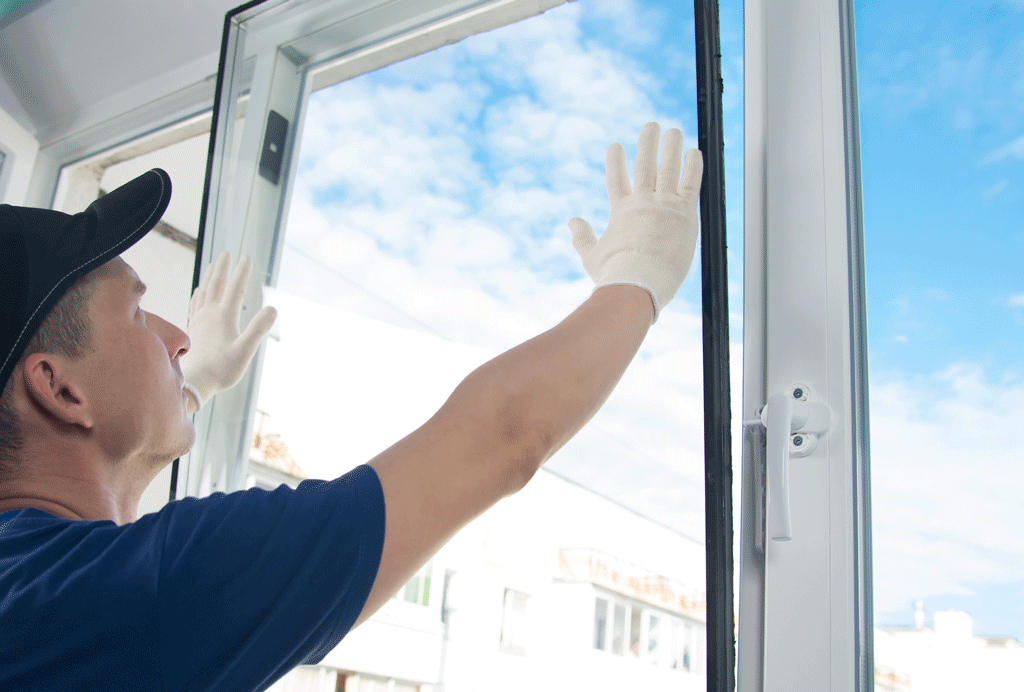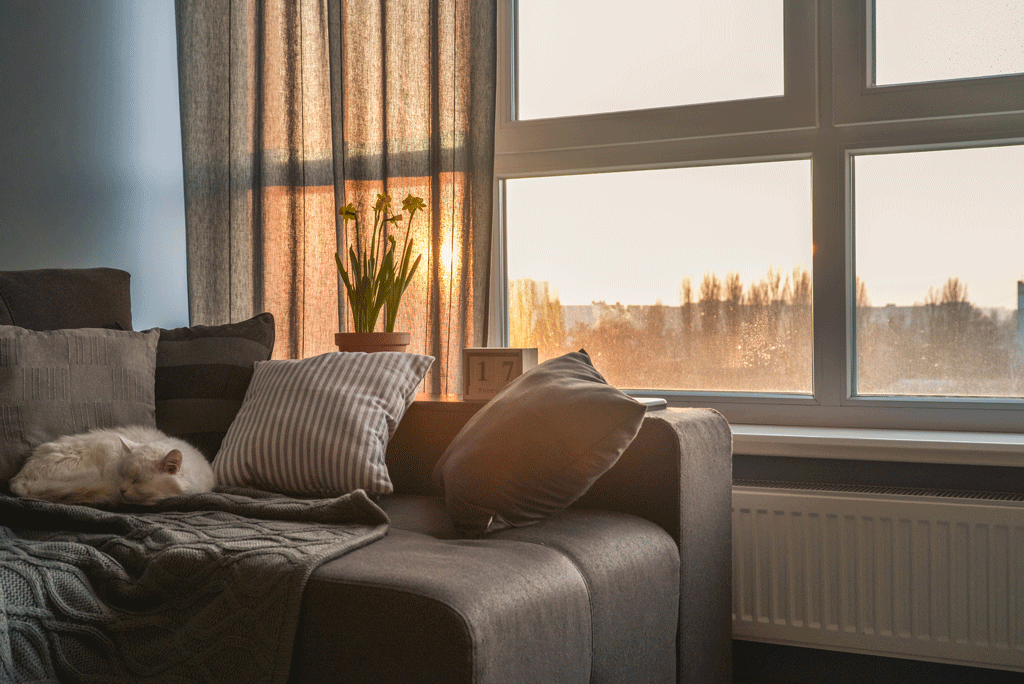Special financing available. Up to 15 months interest free.
Window Types

Hey there! As a homeowner, you know how important it is to make the right choices for your home.
And when it comes to windows, the options can be overwhelming. But don’t worry, we’ve got you covered.
Dive into this comprehensive guide on window types, and discover how the right choice can transform your home’s aesthetic appeal, energy efficiency, and overall comfort.
Why Work With Us on Window Types
Choosing the right window types for your home is a significant decision that impacts not only the aesthetics but also the energy efficiency and comfort of your living space.
When you work with us, you’re not just getting a service; you’re investing in a partnership dedicated to enhancing your home’s value and appeal.
Here’s why partnering with us for your window needs is the best decision you’ll make:
Award-Winning Expertise
With years of experience in the industry, we have honed our skills and knowledge about various window variants.
Whether you’re looking for bay windows to enhance your living room’s appeal or energy-efficient double pane windows to save on energy bills, our team has the expertise to guide you.
We stay updated with the latest trends and technologies in the window industry, ensuring that you get the best advice and solutions tailored to your needs.
Quality Assurance
We prioritize quality in everything we do.
From the materials we use to the installation techniques, every aspect is scrutinized to ensure it meets the highest standards.
Our windows are not only durable but also aesthetically pleasing, ensuring that they complement your home’s design and last for years to come.
Personalized Service for Every Homeowner
Every home is unique, and so are its window needs.
We understand this and offer personalized consultations to understand your preferences and requirements.
Our team takes the time to listen to your concerns, answer your questions, and provide solutions that align with your vision for your home. Your satisfaction is our top priority.
Competitive Pricing and Financing Options
Quality doesn’t have to be expensive.
We believe in offering the best value for your money. Our competitive pricing ensures that you get top-notch services without burning a hole in your pocket.
Additionally, with our special financing options, you can upgrade your windows now and pay later, making it easier for you to achieve your dream home.
Commitment to Sustainability
In today’s world, sustainability is more important than ever.
We are committed to offering window solutions that are not only energy-efficient but also environmentally friendly.
By choosing our services, you’re not just enhancing your home’s appeal and efficiency; you’re also making a green choice that benefits the planet.
Stellar Customer Support
Our relationship with you doesn’t end once the windows are installed. We believe in building lasting relationships.
Our customer support team is always available to assist you with any queries or concerns you might have.
Whether it’s maintenance advice or post-installation support, we’re just a call away.
Photo By Kurgu128 at iStock
Our Comprehensive Services
Consultation: Navigating the World of Window Types
Embarking on a home improvement journey, especially when it involves choosing the right window types, can be both exciting and overwhelming.
With a plethora of options available in the market, making the right choice becomes crucial. That’s where our consultation services come into play.
Understanding Your Needs
Before diving into the various window variants, our experts take the time to understand your specific needs.
Are you looking for windows that offer better insulation?
Or perhaps you’re aiming for a particular aesthetic appeal? By understanding your preferences and requirements, we can tailor our recommendations to suit your home perfectly.
Exploring the Window Types
Windows are not just about letting in light; they play a pivotal role in energy efficiency, security, and even the overall value of your home.
Our team will introduce you to the myriad of window variants available, from bay windows that offer panoramic views to double pane windows that prioritize energy efficiency.
Each window type comes with its unique set of benefits, and we ensure you have a clear understanding of each.
Making an Informed Decision
The world of window types can be complex, but with the right guidance, it doesn’t have to be daunting.
Our experts will provide you with all the necessary information, from the pros and cons of each window type to their maintenance requirements.
We believe that an informed homeowner makes the best decisions, and our consultation aims to equip you with all the knowledge you need.
Budget Considerations
We understand that budget plays a significant role in any home improvement decision.
During our consultation, we’ll also discuss the cost implications of each window type, ensuring you get the best value for your investment.
Post-Consultation Support
Even after our consultation session, we’re here for you. If you have any more questions or second thoughts, our team is always available to assist and guide you further.
Our consultation service is designed to simplify the process of choosing the right window variants for your home.
We aim to empower you with knowledge, ensuring that when you make a decision, it’s one that you’ll be happy with for years to come.
So, if you’re contemplating a window upgrade, don’t hesitate to reach out to us at 972-290-1848. Let’s explore the world of window types together!
Installation: Perfecting the Art of Window Types Placement
The installation process is where the rubber meets the road in the world of window variants.
It’s one thing to select the perfect windows for your home, but ensuring they are installed correctly is equally, if not more, crucial.
A window, no matter how advanced or high-quality, can only perform at its best when installed with precision and expertise.
Here’s how our professional team ensures that every window we install stands the test of time and delivers optimal performance:
Pre-Installation Assessment
Before we even begin the installation process, our team conducts a thorough assessment of your home. This helps us understand the structural nuances, ensuring that the window types you’ve chosen fit seamlessly and securely.
We consider factors like wall thickness, insulation needs, and even aesthetic alignment.
Precision is Key
When it comes to window variants installation, there’s no room for error.
Our team uses advanced tools and techniques to ensure that each window is placed perfectly. This not only ensures a snug fit but also guarantees that the window functions optimally, be it in terms of insulation, noise reduction, or simply opening and closing smoothly.
Safety First
Installing windows, especially on higher floors, can be a risky endeavor. Our team is trained to follow strict safety protocols, ensuring that the installation process is not only efficient but also accident-free.
We use safety gear, harnesses, and other equipment to ensure that the job is done without any hitches.
Post-Installation Checks
Once the window is installed, our job isn’t over.
We conduct a series of checks to ensure that everything is in order. From testing the window’s functionality to ensuring there are no gaps or leaks, we leave no stone unturned.
Guidance on Maintenance
After the installation, we provide homeowners with guidance on maintaining their new window types.
Proper maintenance can significantly extend the lifespan of your windows and ensure they remain as efficient and beautiful as the day they were installed.
Dedicated Support
Should you face any issues post-installation or have any queries, our team is always on standby to assist. We believe in forging long-term relationships with our clients, and our post-installation support is a testament to that commitment.
Maintenance: Ensuring Your Window Types Stay Pristine
Windows are more than just panes of glass that offer a view to the outside world; they’re integral components of your home that play a pivotal role in aesthetics, energy efficiency, and security.
Just like any other part of your home, windows need regular attention and care to ensure they remain in top-notch condition.
At our company, we understand the nuances of different window variants and the specific care they require.
Windows, over time, are exposed to various elements, from harsh sunlight to rain, snow, and even the occasional stray ball from the neighborhood kids. This exposure can lead to wear and tear, reducing the efficiency and beauty of your windows.
That’s where our maintenance services come into play.
Our team of experts is trained to identify the early signs of window wear, from minor scratches to seal damages that can compromise the insulation properties of your windows.
Regular maintenance checks can help address these issues before they escalate, saving you from costly repairs or replacements in the long run.
Beyond just identifying problems, our maintenance services are comprehensive.
We clean the windows, ensuring they remain spotless and clear. We also check the seals, locks, and other mechanisms to ensure everything functions smoothly.
If we find any issues, from a minor glitch in the locking mechanism to a seal that needs resealing, we address it promptly.
But our maintenance services aren’t just about fixing problems.
We also advise homeowners on best practices to ensure their window types remain in the best possible condition. Simple tips, like how to clean windows without leaving streaks or which products to avoid, can go a long way in ensuring the longevity of your windows.
Customization: Tailoring Window Types to Reflect Your Unique Style
Every home tells a story, and every homeowner has a vision of how they want that story to be portrayed.
Windows, being one of the most prominent features of any home, play a significant role in shaping that narrative.
While there’s a vast array of window variants available in the market, sometimes what’s available might not perfectly align with your vision. That’s where our customization services come into the picture.
Understanding that every home is unique and every homeowner’s preferences are distinct, we’ve made it our mission to offer window variants that can be tailored to fit any style, design, or architectural requirement.
Whether you’re looking for a specific color, design, or even a particular type of glass, our team is equipped to bring your vision to life.
Our customization process begins with a detailed consultation.
We sit down with you to understand your requirements, preferences, and the overall aesthetic you’re aiming for. This helps us provide recommendations and options that align closely with your vision.
Whether you’re looking to recreate a vintage look with intricate designs or aiming for a sleek, modern aesthetic with minimalist lines, our team has the expertise to guide you through the myriad of choices.
Beyond just aesthetics, our customization services also delve into the functional aspects of window types.
If you’re looking for windows that offer enhanced insulation, noise reduction, or even specific safety features, we can customize your windows to meet those specific needs.
One of the standout features of our customization services is the attention to detail.
We understand that when homeowners opt for customization, they’re looking for perfection. Our team ensures that every customized window is crafted with precision, ensuring it not only looks perfect but also functions flawlessly.
Emergency Response: Swift Solutions for Your Window Types Crises
In the realm of home maintenance and improvement, emergencies are unpredictable.
A sudden storm might damage your windows, or an unfortunate accident could lead to a shattered pane. In such situations, time is of the essence.
You need a team that not only understands the intricacies of different window variants but also responds promptly to ensure the safety and security of your home.
That’s where our emergency response services come into play.
Immediate Assistance for Window Types Damages
When a window in your home is damaged, it’s not just an aesthetic concern; it’s a matter of security, energy efficiency, and sometimes even safety.
Our team is trained to provide immediate assistance, ensuring that any damage is addressed promptly.
Whether it’s a small crack or a completely shattered window, we have the expertise and equipment to handle it.
24/7 Availability: Because Emergencies Don’t Wait
We understand that emergencies can strike at any hour.
That’s why our emergency response team is available 24/7, ensuring that you’re never left stranded with a window problem. Whether it’s late at night or early in the morning, a simple call to 972-290-1848 will have our team on their way to address your window variants crisis.
Temporary Fixes to Ensure Security
In some cases, a complete repair or replacement might take time.
In such situations, our team ensures that a temporary fix is put in place. This ensures that your home remains secure and insulated until a more permanent solution can be implemented.
Our primary goal is to ensure the safety and comfort of your home and its inhabitants.
Expertise Across All Window Types
Different window variants have different structures, mechanisms, and vulnerabilities.
Our emergency response team is trained across all types of windows, ensuring that they can handle any situation, be it a bay window, casement window, or a double pane window.
Their comprehensive knowledge ensures that the right solution is implemented swiftly.
Post-Emergency Consultation
Once the immediate crisis is addressed, our team will provide you with a detailed consultation on the next steps. This might involve recommendations for repairs, replacements, or even upgrades.
We believe in empowering homeowners with knowledge, ensuring that they can make informed decisions post an emergency.

Photo By Aleksandra Zlatkovic t
The Evolution of Window Types at Energy Window Solutions
Over the years, the demand for diverse window types has grown exponentially.
At Energy Window Solutions, we’ve been at the forefront of this evolution, consistently adapting and expanding our offerings to meet the ever-changing needs of homeowners.
Our journey began with a simple mission: to provide high-quality windows that not only look great but also offer superior functionality.
As the industry evolved, so did the variety of window types.
We recognized the importance of energy efficiency, aesthetic appeal, and durability in modern homes. This led us to innovate and introduce a range of windows that cater to these specific requirements.
Our commitment to staying updated with the latest trends and technologies ensures that we always have the most advanced and efficient window types available for our customers.
Our passion for excellence and our dedication to customer satisfaction have made us a trusted name in the industry.
When you choose Energy Window Solutions, you’re not just getting a window; you’re investing in a legacy of quality, innovation, and unparalleled service.
Join us in our journey towards creating brighter, more energy-efficient homes with the perfect window types.
Photo By tashka2000 at iStock
Exploring the World of Window Types
Windows are more than just a view to the outside world. They play a pivotal role in your home’s comfort, energy efficiency, and overall appeal.
Let’s delve deeper into the various window types:
Bay Windows: A Blend of Beauty and Functionality for Your Window Types
Bay windows are a true testament to the blend of form and function. These window types are more than just an architectural feature; they’re an experience.
Designed to project outwards from the main walls of a building and forming a bay in a room, they offer homeowners a unique space that’s both functional and aesthetically pleasing.
Imagine this: It’s a chilly winter morning, and you’re nestled in the cozy nook of your bay window, wrapped in a blanket, with a book in hand and a cup of hot cocoa by your side.
As you sip and read, the bay window offers you a panoramic view of the snow-covered landscape outside, making the experience surreal.
This is the magic of bay windows.
But the appeal of bay windows goes beyond just aesthetics. Their unique design, which typically combines three or more windows at an angle, allows for increased sunlight penetration.
This means rooms with bay windows tend to be brighter, warmer, and more inviting. The natural light that floods in not only reduces the need for artificial lighting during the day but also helps in regulating the room’s temperature, making it energy efficient.
Another standout feature of bay windows is the additional interior space they provide. This space can be utilized in a myriad of ways.
From creating a quaint reading nook, a space for indoor plants, to even a storage bench, the possibilities are endless. For homeowners who are always on the lookout for ways to maximize their space, bay windows offer a practical solution.
Moreover, bay windows can significantly enhance the curb appeal of your home. Their unique design adds depth and dimension to a building’s facade, making it stand out.
Whether you own a historic home and want to retain its vintage charm or have a modern abode and are looking for ways to add character, bay windows are a versatile choice that can complement any architectural style.
Bay windows are not just another item on the list of window types; they’re an investment in your home’s aesthetics, functionality, and overall value.
If you’re considering a home renovation or simply looking to upgrade your windows, give bay windows a thought.
And if you need expert advice or installation services, remember to reach out to us at 972-290-1848.
Let’s transform your living space with the timeless charm of bay windows.
Casement Windows: The Breath of Fresh Air in Window Types
Casement windows are a breath of fresh air, quite literally.
These window types have been a favorite among homeowners for years, and it’s easy to see why. With their unique design and functionality, they bring a touch of elegance and practicality to any home.
At first glance, casement windows might remind you of a door.
Hinged at the sides, they swing outwards, much like a door would. This design is what sets them apart from other window types. While most windows slide up or sideways to open, casement windows swing out, allowing for a full opening.
This means that when you open a casement window, you’re getting maximum ventilation.
Imagine a warm summer day, and you want to let in that gentle summer breeze. With casement windows, you can open up your home to nature, letting in the fresh air and the sounds of the outdoors.
But it’s not just about ventilation.
Casement windows also offer an unobstructed view. Since they don’t have a sash in the middle, like double-hung or sliding windows, you get a clear, wide view of the outside. Whether you’re looking out at a lush garden, a bustling city street, or a serene beach, casement windows ensure that nothing comes between you and your view.
Another advantage of casement windows is their energy efficiency.
When closed, casement windows provide a tight seal, ensuring that there’s minimal air leakage. This means that whether it’s a chilly winter night or a scorching summer day, the outside air stays out, and your home remains comfortable.
Over time, this can lead to significant savings on your energy bills.
Safety and security are other aspects where casement windows shine. Their design makes them harder to break into compared to other window types.
Additionally, most casement windows come with multi-point locking systems, adding an extra layer of security to your home.
Casement windows are a perfect blend of beauty, functionality, and security. They’re a testament to how window types can enhance the living experience, offering homeowners comfort, safety, and a connection to the outside world.
If you’re considering upgrading your windows or are in the process of building a new home, give casement windows a thought.
And if you need more information or expert installation services, don’t hesitate to reach out to us at 972-290-1848. Let’s bring the beauty and efficiency of casement windows to your home.
Double Pane and Triple Pane Windows: The Pinnacle of Energy Efficiency in Window Types
In today’s world, where energy conservation and sustainability are paramount, homeowners are constantly seeking ways to make their homes more energy-efficient.
Enter double pane and triple pane windows, the champions of energy efficiency in the realm of window types.
Double pane windows, as the name suggests, consist of two panes of glass separated by a space filled with an insulating gas, typically argon or krypton.
This design creates a barrier that significantly reduces the transfer of heat, ensuring that your home remains warm during the chilly winter months and cool during the scorching summer days. But the innovation doesn’t stop there.
For those looking to take energy efficiency to the next level, triple pane windows offer an even more advanced solution.
Featuring three glass panes with gas-filled spaces in between, these windows provide multiple insulating layers, further minimizing heat transfer.
But what does this mean for you as a homeowner?
Firstly, it translates to a more comfortable living environment. No more cold drafts in the winter or overheated rooms in the summer. With double and triple pane windows, you can enjoy consistent indoor temperatures all year round.
Secondly, and perhaps more importantly, it means significant savings on your energy bills.
By reducing the strain on your heating and cooling systems, these window types ensure that your home remains energy-efficient, leading to lower energy consumption and, consequently, reduced energy costs.
Beyond energy efficiency, double and triple pane windows offer other benefits. They are excellent at soundproofing, making them ideal for homes in noisy neighborhoods or near busy streets.
If peace and quiet are what you seek, these windows can significantly reduce outside noise, ensuring a serene and tranquil indoor environment.
Additionally, they help in reducing condensation, which can be particularly beneficial during the colder months, preventing mold growth and ensuring a healthier living space.
If energy efficiency, comfort, and sustainability are high on your list of priorities, double and triple pane windows are the window types you should be considering. They are a testament to how innovation and technology can transform our living spaces, making them more comfortable, sustainable, and cost-effective.
Picture Windows: Framing Nature’s Beauty in Window Types
There’s something truly mesmerizing about gazing out at a beautiful landscape, be it a bustling city skyline, a serene beach, or a lush green garden.
Picture windows, among the most elegant of window types, are designed to capture and frame these views, turning them into living art pieces right in your home.
Picture windows are aptly named. They act as large, fixed frames, capturing the beauty of the outdoors and bringing it into your living space.
Unlike other window types that may have sashes, bars, or other obstructions, picture windows offer a clear, unobstructed view. This means that every time you look out, you’re treated to a panoramic view of the world outside, unmarred and unbroken.
But the benefits of picture windows go beyond just aesthetics. Their large size allows for an abundance of natural light to flood into your room.
This not only makes spaces feel brighter and more open but also can have positive effects on mood and well-being.
Natural light has been shown to boost mood, increase productivity, and even improve sleep patterns.
With picture windows, you’re not just enhancing your home’s aesthetic appeal; you’re also promoting a healthier living environment.
Moreover, while picture windows are fixed and don’t open, they can be strategically paired with other window types that do. For instance, you could flank a picture window with casement or awning windows. This way, you get the best of both worlds: the unobstructed views of a picture window and the ventilation of operable windows.
In terms of energy efficiency, modern picture windows come equipped with features like low-E coatings and insulating gases between panes.
This ensures that while you’re enjoying the views and the natural light, you’re not compromising on energy efficiency or comfort.
Double Hung Windows: The Epitome of Versatility in Window Types
When it comes to combining classic design with modern functionality, double hung windows stand out in the vast array of window types.
These windows have graced homes for centuries, and their enduring popularity is a testament to their unmatched versatility and practicality.
At the heart of the double hung window’s design is its two operable sashes.
Unlike other windows that might only allow you to open a single section, double hung windows give you the freedom to open both the top and bottom sashes. This unique feature offers homeowners a plethora of benefits.
Firstly, the ability to open both sashes means enhanced ventilation.
Imagine a warm summer day; with a double hung window, you can open the top sash to let the hot air escape while opening the bottom sash to let in the cooler breeze.
This natural circulation can help keep your home fresh and reduce the reliance on artificial cooling.
Cleaning is another area where double hung windows shine.
Gone are the days of struggling with ladders or hiring professionals to clean the exteriors.
With their tilt-in feature, cleaning both sides of the window becomes a breeze. Simply tilt the sashes inward, and you can easily access both sides, ensuring your windows remain spotless and clear.
But it’s not just about ventilation and cleaning. Double hung windows also offer an added layer of security.
With two locks – one for each sash – they provide an extra deterrent against potential intruders. Additionally, their robust design and construction mean they’re built to last, offering homeowners peace of mind and value for money.
In essence, double hung windows encapsulate what homeowners seek in window types: beauty, functionality, and security. They seamlessly blend into various architectural styles, from vintage homes to modern abodes, making them a versatile choice for any homeowner.
What Our Customers Are Saying
At Energy Window Solutions, we pride ourselves on delivering top-notch services, but don’t just take our word for it.
Here’s what some of our valued customers have to say:
Tina Kay Jones mentions, “We purchased triple pane windows and LOVE them! We actually got 3 bids and so happy we chose these! Better quality at a better price! Love all our windows! Especially our roll out kitchen window! Richard is the best…“
Tom Dickenson shares his delightful experience, stating, “I am extremely delighted with the exceptional service provided by Energy Window Solutions. The installation of windows was smooth and hassle-free. The team demonstrated professionalism, arriving on time, and completing the task efficiently.“
Lori Bauer expresses her confidence in our services, saying, “After Rich Ursetta’s presentation, we knew without a doubt that we wanted to order our replacement windows and doors from Energy Window Solutions. We were even more convinced when our neighbor told us that Rich replaced his windows 17 years ago and they still look brand new.“
These are just a few of the glowing testimonials from our satisfied customers.
If you’re considering upgrading your windows, why not join our growing list of happy homeowners?
For more reviews and insights, you can check out our Google My Business profile.
At Energy Window Solutions, our commitment to excellence knows no bounds. We’re proud to extend our top-tier window services to a broad spectrum of locations, ensuring homeowners across the region have access to the best in window types and installation.
From the bustling streets of Dallas, TX to the serene landscapes of Southlake, TX, our expert team is always on the move, ready to bring your window dreams to life.
Whether you reside in the vibrant heart of Fort Worth, TX or the peaceful suburbs of Plano, TX, you can count on us to be there, offering our expertise and unparalleled service quality.
Our presence in Lewisville, TX and Flower Mound, TX further cements our dedication to reaching as many homeowners as possible.
Every location we serve is a testament to our unwavering dedication to quality, professionalism, and customer satisfaction. No matter where you are, when you choose Energy Window Solutions, you’re choosing the best in the business.
So, if you’re in any of these areas and are looking to transform your home with exceptional window types, contact us by calling at 972-290-1848.
We’re here to serve, no matter where you are.
Photo By MicroStockHub at iStock
Frequently Asked Questions
1.What types of windows do you offer at Energy Window Solutions?
We offer a diverse range of window types, including double hung, casement, bay, picture, double pane, triple pane, and many more. Our selection ensures that every homeowner finds the perfect fit for their needs.
2.How do I determine the best window type for my home?
Our experts can provide a consultation to understand your needs, preferences, and the architectural style of your home. Based on this, we’ll recommend the most suitable window types for you.
3.Do you provide installation services?
Yes, we offer professional window installation services. Our trained team ensures that your windows are installed correctly for optimal performance and longevity.
4.How do your windows contribute to energy efficiency?
Many of our window types, especially double pane and triple pane windows, are designed to reduce heat transfer, ensuring your home remains comfortable throughout the year and potentially reducing energy bills.
5.Can I customize my windows?
Absolutely! We offer customization options to ensure your windows align perfectly with your home’s style and your personal preferences.
6.How long does the installation process take?
The duration varies depending on the number and type of windows. However, our team always aims to complete installations efficiently without compromising on quality.
7.Do you offer warranties on your windows?
Yes, we provide warranties on our windows, ensuring you have peace of mind regarding the quality and durability of our products.
8.How do I maintain my windows post-installation?
We offer maintenance services to keep your windows in top shape. Regular cleaning and occasional checks for any damages or issues will also ensure longevity.
9.What sets Energy Window Solutions apart from other window providers?
Our commitment to quality, vast selection of window types, professional installation, and exceptional customer service make us a preferred choice for many homeowners.
10.How can I schedule a consultation or get a quote?
Simply call us at 972-290-1848 or visit our showroom. Our team will be happy to assist you with all your window-related queries and needs.
Contact us for a free estimate: 972-290-1848. Let us help you find the perfect windows for your home.





